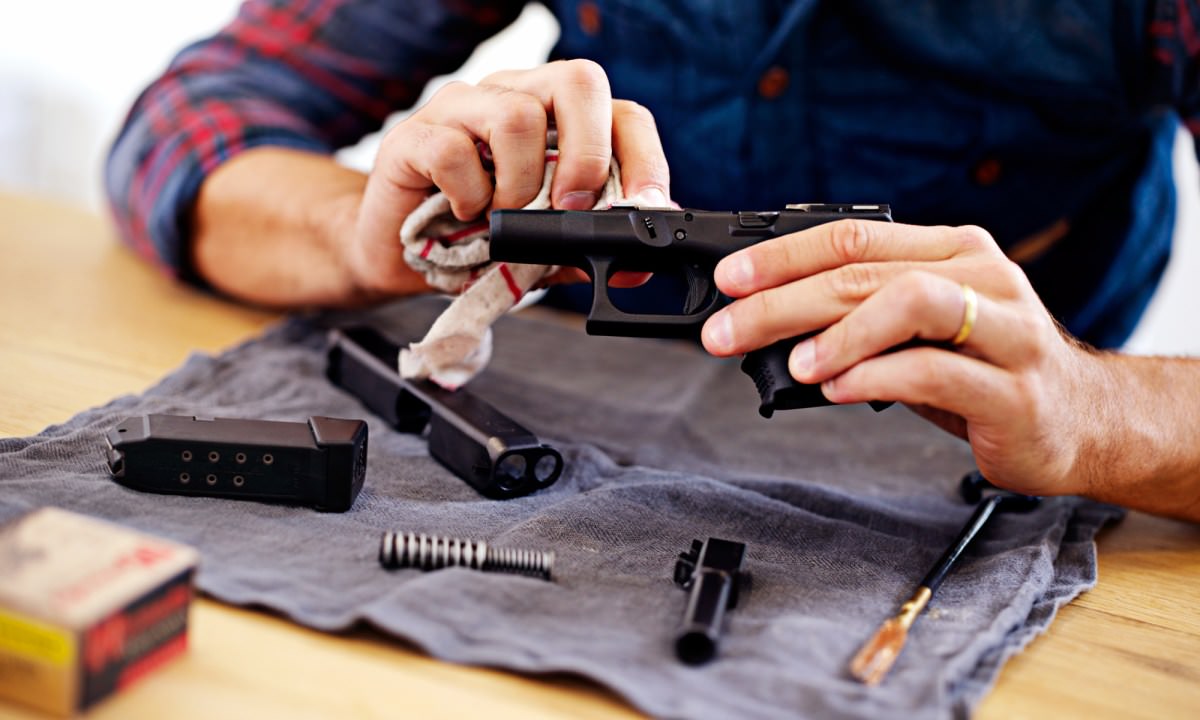Maintaining your handgun or rifle is a necessary part of gun ownership, but it doesn’t have to be a chore—it only takes a few easy steps.
Without proper cleaning and test firing you could be carrying around a firearm that doesn’t shoot when needed, is not accurate, or goes off when it shouldn’t.
Read the Manual
Nobody likes to sit down and read through a boring instruction manual when they’ve got a shiny new purchase in front of them. With a gun, though, not reading it can mean the difference between life and death. Your owner’s manual will not only show you how to properly arm and disarm the gun, but it will also provide a guide on how to keep your gun in perfect working order. If you purchase a used gun you can get your hands on a manual by contacting the manufacturer or searching online.
Not all guns are disassembled the same way, which why it’s so vital to read your owner’s manual when field stripping in order not to break anything.
Unload the Gun
This should go without saying, but you should always unload your gun when it’s not in use. If you have a concealed carry permit, it’s a good idea to switch out the magazine every 4 to 6 months anyway. You should also fire the gun at a target range every few weeks to make sure it’s still in proper working order and to hone your skills.
Use the Right Stuff
Gun owners are notorious for attempting to DIY their own cleaning solutions. Don’t do this. Products designed specifically for cleaning, lubricating and protecting your gun are the safest option when it comes to proper maintenance. WD-40 is not going to cut it. A gun must stand up to extreme heat, friction, high-speed movement in the barrel and rust, which is why fluids and oils made specifically for firearms are the only thing you should use.

Check Often
While avid hunters know to inspect their guns before and after every use, those of us who carry for other reasons might not be aware that we should be checking quite often too. Guns that sit in a holster most days are victims of their environment and often become clogged with debris or even rust. Daily carriers should do a cursory inspection of their guns at the end of each day while those sitting at home or in the car should be inspected weekly.
Removing Debris
Most of us don’t have access to a vat to soak our guns in or a sonic cleaner on hand, so scrubbing your equipment free of debris can get a little labor-intensive. A solvent-soaked toothbrush is probably the most affordable option available. When cleaning the bore, however, you’ll need a few extra pieces of equipment: patches, a brush, rod and some bore solvent. Of course, you could always opt for a MUT tool to make it easier on yourself. Be gentle as you clean the gun and never scrub harder than you need to in order to clear the debris.
Add Light Grease
Using grease on the mechanical parts of a gun is a point of contention among gun enthusiasts. Some people believe doing so can affect the mechanics of the gun and prevent it from functioning properly. There’s no real evidence to back up this claim. Apply small amounts of anti-corrosion oil/grease to the sliding parts of your gun to keep them in proper working order so that they don’t get stuck. The proper grease for your particular gun can be found in the owner’s manual.
Wipe it Down
The external parts of your gun need proper maintenance too, which is a lot easier than cleaning the inside. Rust and other signs of external wear can be combatted with something as simple as an oily rag. Keep a rag soaked with gun oil on hand and, at the end of each day, simply give your gun a once-over to make it look brand new. At the same time you can check for loose screws or lose stocks.